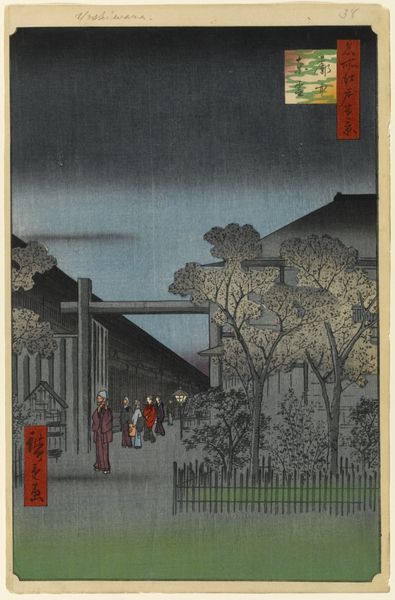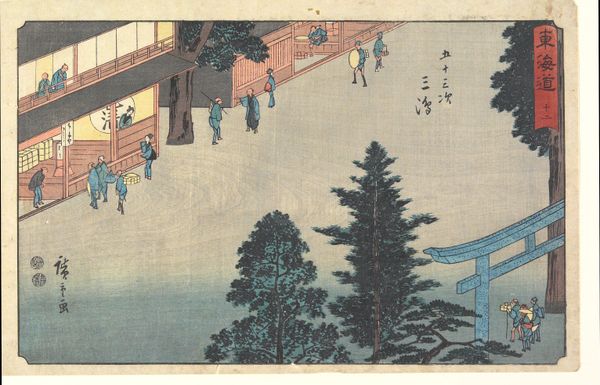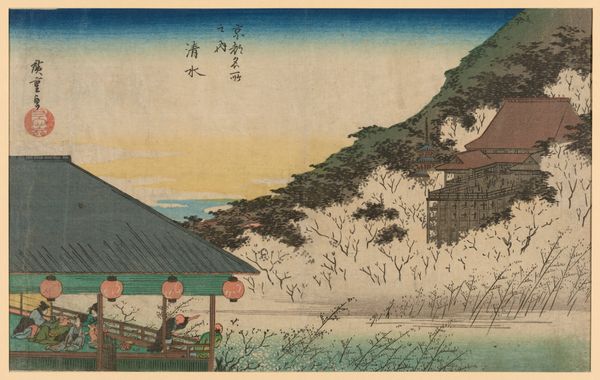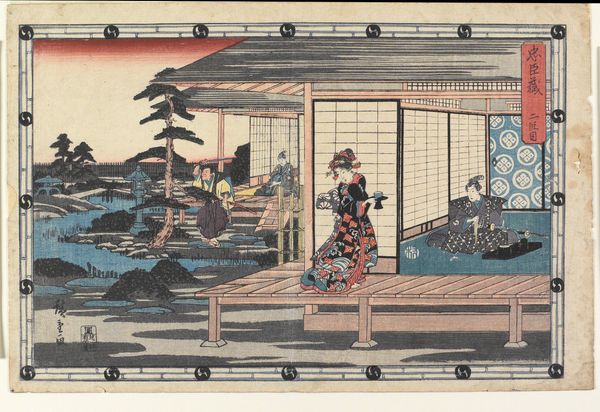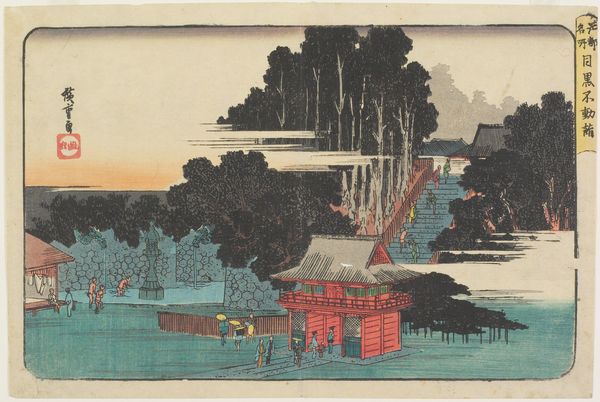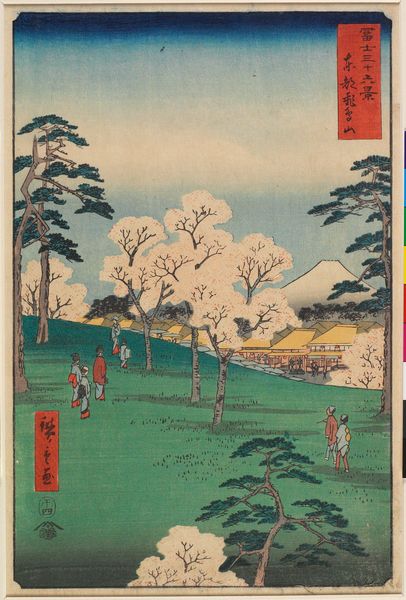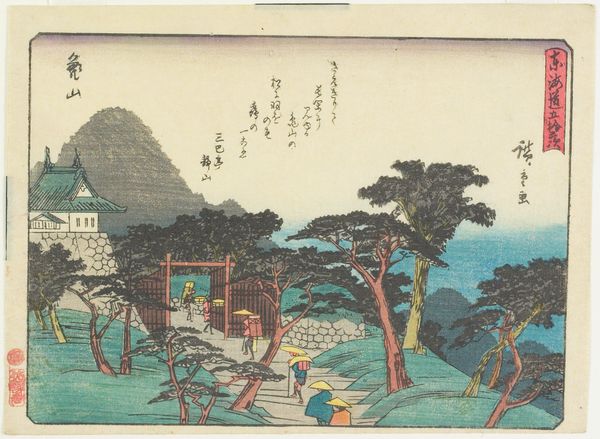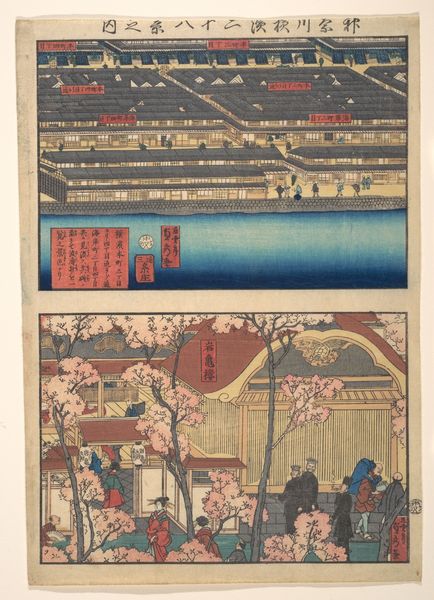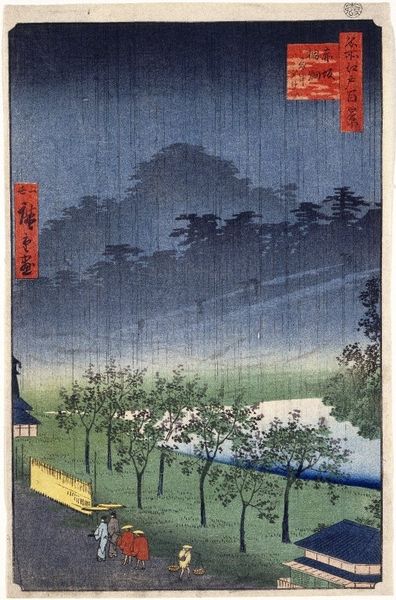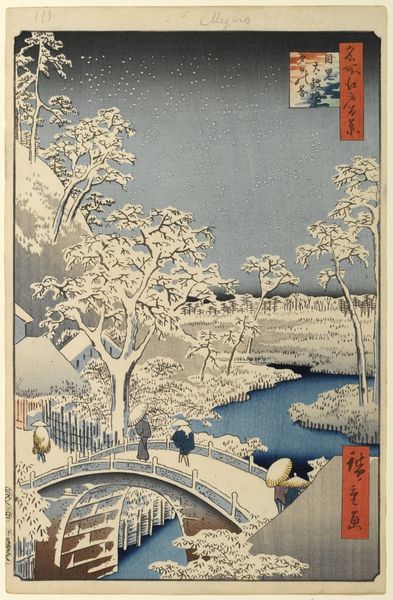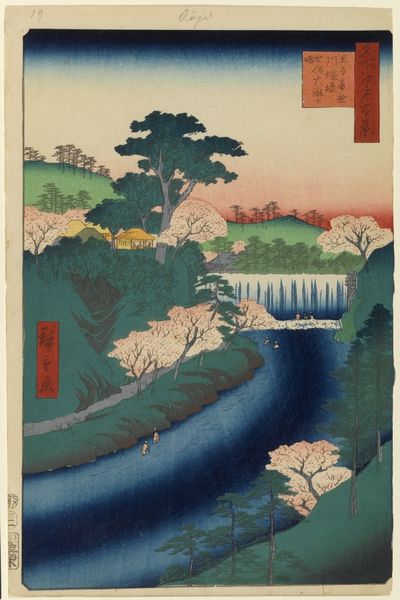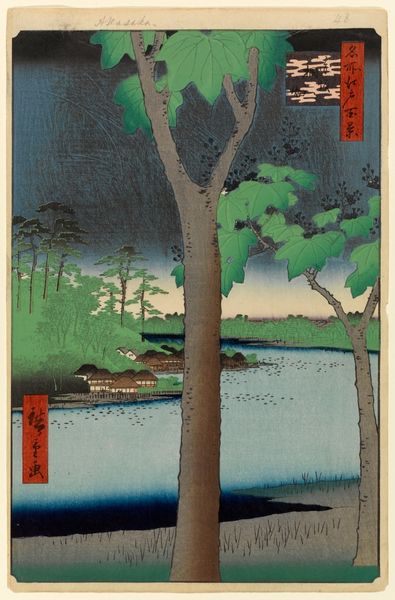
print, woodblock-print
# print
#
landscape
#
ukiyo-e
#
woodblock-print
#
19th century
#
cityscape
#
watercolour illustration
#
watercolor
Dimensions: height 356 mm, width 234 mm
Copyright: Rijks Museum: Open Domain
Editor: Here we have Utagawa Hiroshige's "Ochtendgloren in het Yoshiwara" from 1857, a woodblock print currently held at the Rijksmuseum. I’m immediately struck by the serene atmosphere, that dawn sky fading into deep blue. What do you make of it? Curator: It’s fascinating how Hiroshige captures a sense of everyday life within a space known for its transience. Consider Yoshiwara's role: it was a government-sanctioned pleasure district, heavily regulated yet also a hub of cultural activity. Do you see any elements here that challenge or reinforce that dual identity? Editor: I see people going about their day, nothing too suggestive. Is the image then attempting to normalise the district, despite its unique purpose? Curator: Perhaps "normalise" isn’t quite right. Think about the market for these prints – largely middle-class Edo residents. By depicting Yoshiwara in the soft light of morning, devoid of overt displays of sexuality, Hiroshige presents it as an experience, a place that could be incorporated into a respectable individual’s life through the act of viewing. A consumption, if you will, of the space as imagery. The gaze is shifted. What feeling does that dawn light evoke for you? Editor: A sense of peace, of new beginnings perhaps. I didn't initially connect that with how it reshapes the perception of Yoshiwara for the viewer. Curator: Exactly. It's a softening, a framing. Understanding these contextual factors changes how we read the composition and its colours, doesn't it? Editor: Absolutely, it gives it a layer of socio-political depth. Curator: Indeed, seeing art in context truly shapes our understanding and appreciation.
Comments
No comments
Be the first to comment and join the conversation on the ultimate creative platform.
